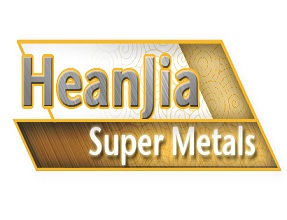You are here: home > Nichrome News > How nichrome ressitance elements dominate Molybdenum disilicide
Product (738)
- Pure Nickel Products (38)
- Incoloy Products (74)
- Inconel Products (72)
-
FeCrAl Product
(99)

-
Nichrome Products
(68)

- Monel Products (36)
- Hastelloy Products (49)
- Nickel Iron Alloy Product (59)
-
Nickel Copper alloys
(47)

- Nonferrous Metal Product (27)
-
Resistance Wire
(90)

- Stainless Steel Product (42)
- Mesh Demister (20)
- Others (17)
Product Forms (14)
Quality Certificate (11)
Learning Gallery (30)
Incoloy News (9)
Inconel News (22)
Molybdenum News (7)
Nikrothal News (4)
Nichrome News (13)
Titanium News (2)
Nickel News (8)
Alloys House (30)
Tools (27)
Nickel alloy News (30)
Latest Buzz (30)
nickel chrome copper iron alloys news (28)
Credit Report
Products Index
Company Info
Heanjia Super-metals Co., Ltd. [China (Mainland)]
Business Type:Manufacturer, Trading Company
City: Beijing
Province/State: Beijing
Country/Region: China (Mainland)
Nichrome News
How nichrome ressitance elements dominate Molybdenum disilicide
The molybdenum disilicide materials are introduced in the different shapes and configurations and featured with largest performance temperatures and power loadings of the elements in the specific environments. These have consistent resistance value that enables the new and ancient materials to be joined in the series. Quick thermal cycling is viable without losing the quality of material and these can be altered easily in the hot furnace. Moreover molybdenum disilicide materials also provide the longest intrinsic life of the whole electric heating materials. however the reason that nichrome heating wire is recommended over the molybdenum disilicide materials is its expensive operations.
The molybdenum disilicide materials require more expensive power control devices than the nichrome metal. The molybdenum disilicide materials are referred as the highly costly materials for particular operation. Just like silicon carbide, these are also made of ceramic materials therefore there is equal risk of rupture like silicon carbide.
The molybdenum disilicide materials require more expensive power control devices than the nichrome metal. The molybdenum disilicide materials are referred as the highly costly materials for particular operation. Just like silicon carbide, these are also made of ceramic materials therefore there is equal risk of rupture like silicon carbide.
The manufacturers of molybdenum disilicide introduce different levels of elements on the base of difference in the MET values. The MET value in the absence of air and vacuum is greater than the metallic elements and silicon carbide because of more stability and reproduction features of the sheath layer that is produced on the surface. If the molybdenum disilicide materials are used in the lower temperature, their oxidation occurs at 550 °C that causes yellowish residue on the material surface. It is called pest oxidation that doesn't cause any destructive effects on the operation capacity of molybdenum disilicide elements. However the pest oxidation is significant source of metal contamination therefore the operation at such temperature must be restricted.
If the element layout is offers the enhanced performance in the different furnace temperature and atmospheres, the life of molybdenum disilicide can be enhanced. Rarely, the element substitution is done by the mechanical break during the loading and unloading and maintenance applications or inadequate installations that causes mechanical stresses and tends to fractures. Another reason of substitution with nichrome resistance wire is the overheating and metal spoil due to electrical processing. An adequate maintenance of the element sealing options and electrical joints reduces the substitution requirements due to these kinds of damages.
In the following times, the molybdenum disilicide materials have been made to fulfill the emerging demands of furnace temperature cycles and atmospheres. Such elemental characteristics are processed for particular operations like high temperature performances in the active environments (for example nitrogen) and superior temperatures with varying environments and large temperatures and quick cycling in the laboratory and large temperature sintering furnaces and pollution active high temperature procedures that show a valuable improvement in the molybdenum disilicide material techniques.These elements offer the furnace manufacturer and users with the new series of choices to solve the issues and minimize the operation price in the new and old furnace by using the molybdenum disilicide materials.
Pre Page:
How to choose the appropriate heating...
Next Page:
Factors that emphasize the life of...
.gif)


